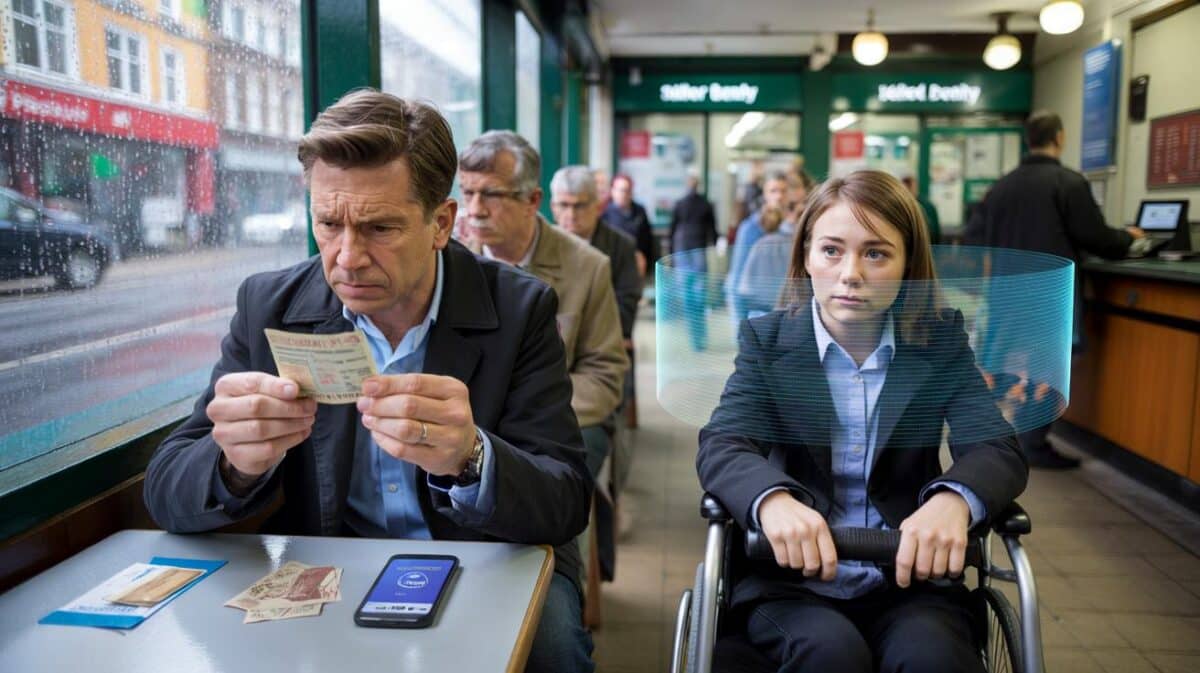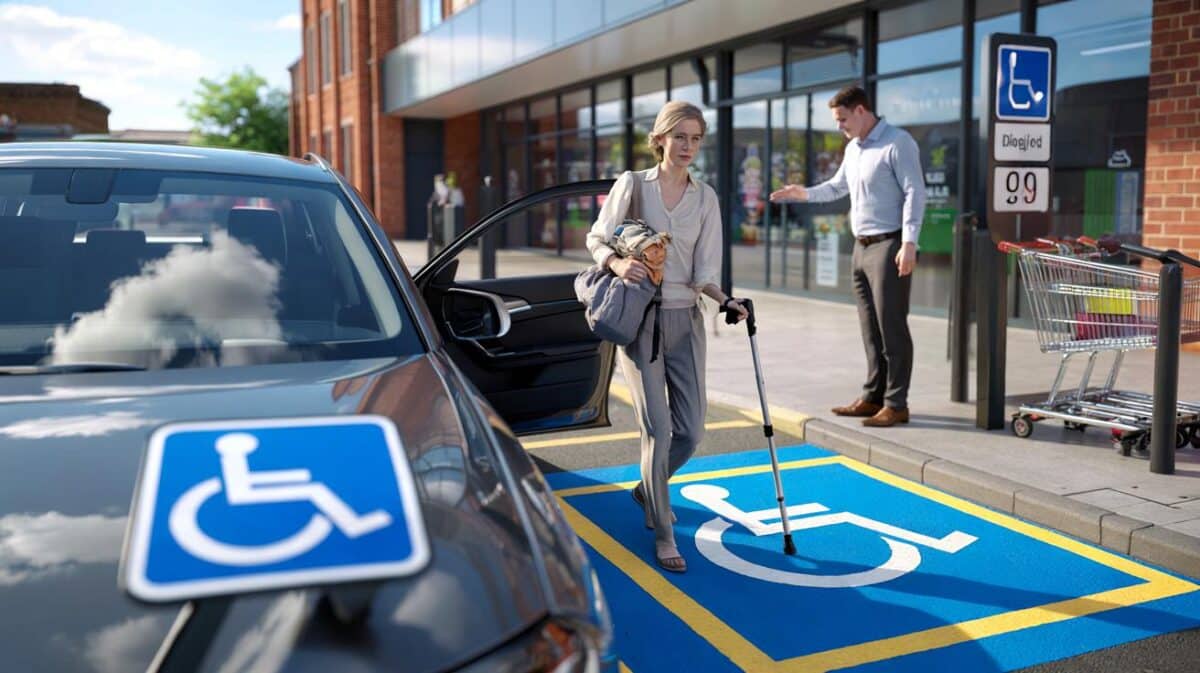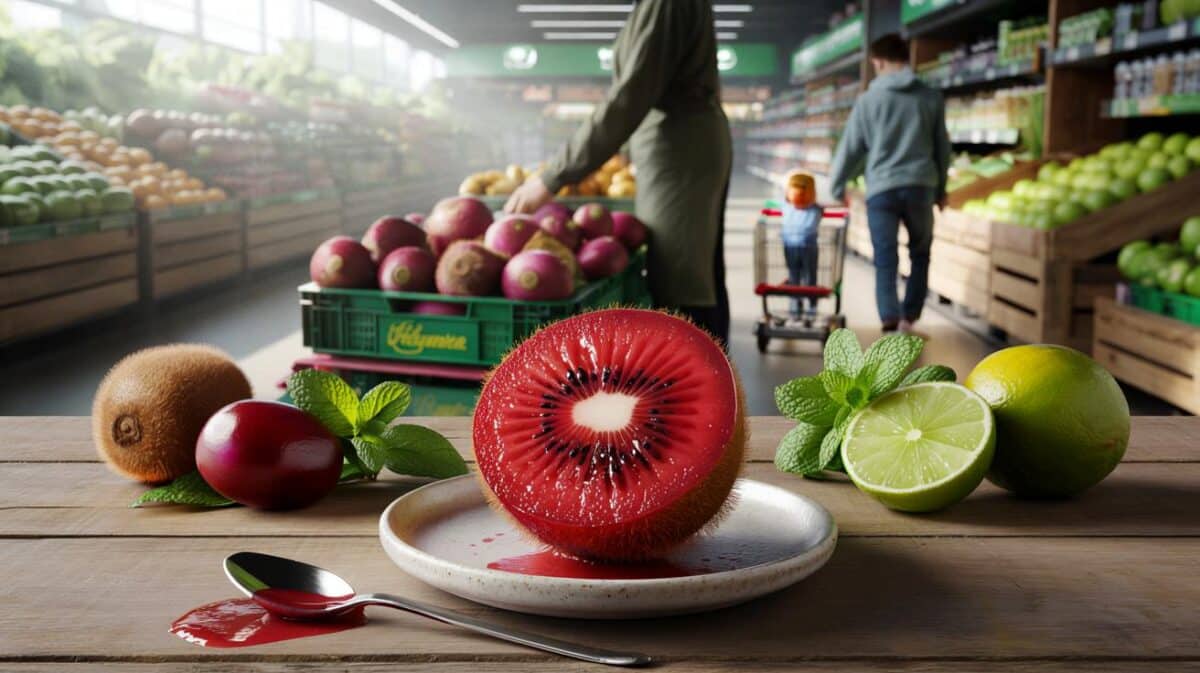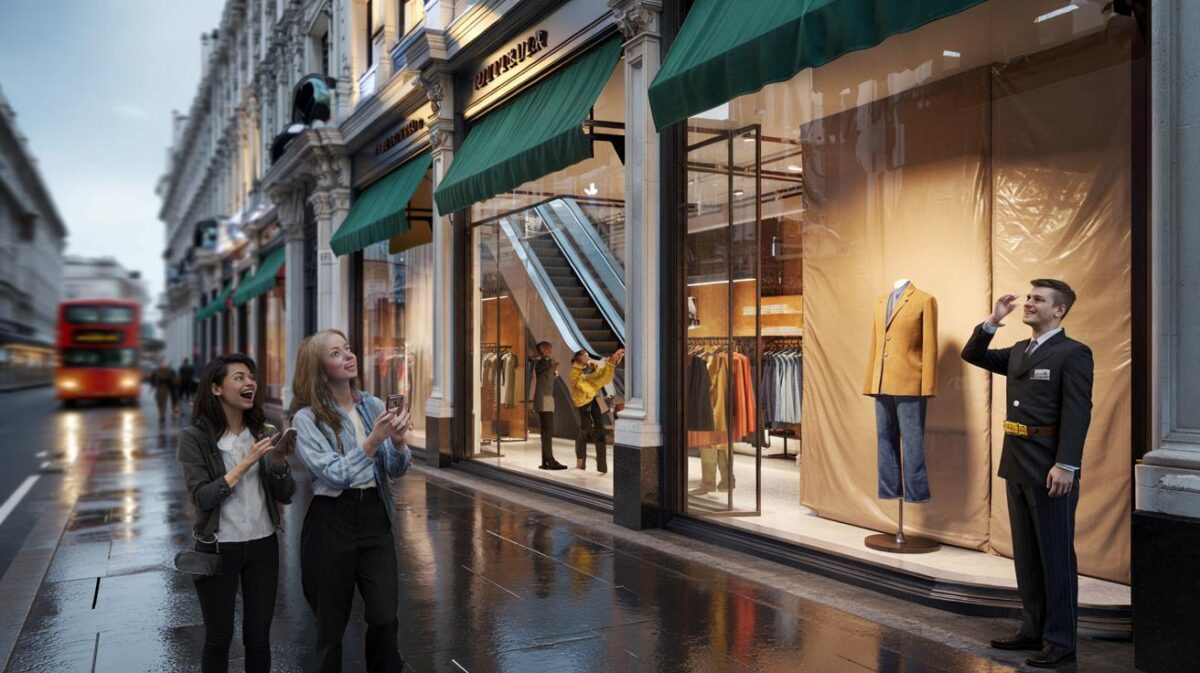Morrisons is preparing to roll out AI-powered trolleys next year, promising faster trips, smaller queues and fewer frazzled moments in front of the self-checkouts. The stakes are classic: time versus trust, convenience versus privacy, tech glitz versus the quiet rhythm of a familiar aisle.
The lights flicker on just after six in the morning, that soft grocery-store dawn. A night-shift colleague wheels a neat line of trolleys into place, metal clinking like cutlery. A couple in gym gear drift past the bakery; a dad with a pram searches for nappies and a bargain. Soon, these trolleys will be different. A screen on the handle. Cameras near the basket. Tiny scales hidden in the frame. You put your milk in, and it recognises the brand, the size, the deal. You pay right there and leave, no checkout in sight. It felt oddly calm. Then the trolley showed me a shortcut I didn’t know existed.
Smart trolleys meet the British weekly shop
Morrisons plans to introduce AI-enabled shopping trolleys in select stores next year, with a broader rollout to follow if shoppers take to them. These are not gimmick carts with tablets glued on. Think computer vision that can recognise a tin of tomatoes from three angles, weight sensors that spot a bag of carrots, and an on-board checkout that lets you pay at the handle.
The idea is simple: cut the dithering and the queueing, and give shoppers a cleaner path through the store. For Morrisons, it’s also a data play. The trolley sees what goes in and when, and that can surface better deals in the moment. It can suggest the pasta you forgot or the gluten-free option if that’s your pattern. The weekly shop, quietly personalised.
Picture a Saturday rush. You grab a trolley and tap your loyalty card. Once you fold two bags into the basket, the handle wakes with a soft chime. You drop in a loaf; the screen confirms it in a beat, then nudges a bakery offer you might actually use. At the end, a green button says pay, you tap a card or phone, and roll straight out. No beep chorus. No “unexpected item in the bagging area.” For parents, carers, anyone short on time, the pitch is clear: **no queue, no faff**.
Why now? Grocery margins are thin and labour is stretched. Queue fatigue is real. Shoplifting—“shrink” in retail talk—has become a stubborn line on store reports. At the same time, Amazon-style cashierless experiments showed the promise and the pitfalls: slick for small baskets, expensive at scale. Smart trolleys land somewhere in the middle. They keep the open store we know, yet melt the checkout into the handle. They promise speed without tearing up ceilings for hundreds of cameras. And they open the door to smarter promotions that aren’t just yellow stickers shouting for attention.
How the AI trolley actually works
It starts with a tap. You take a trolley, tap your loyalty card or phone, and the handle lights up with your first name. Drop an item into the basket and the camera plus sensors work together to identify it. The screen shows the item, price, and any deal. If you change your mind, lift it out and the total adjusts. At the end, press pay on the handle, tap your card, and the gate opens like magic.
There’s no scanning barcode dance. If you have a loose apple or a bakery roll, the on-board scale weighs it and the AI suggests the right product. You can bag as you go, which means the moment you leave, you’re done. For heavier cases of water or multipacks of loo roll, the trolley can detect them on the lower rack with a small camera near the wheel.
There are smart safeguards. If the trolley isn’t sure, it asks you to confirm the item from a shortlist. If you accidentally double-bag something and the weight looks off, it’ll flag it kindly. And if you want help, you press the call button and a colleague pops over. Let’s be honest: nobody really does that every day.
Tips, pitfalls and what real shoppers will notice
Start simple on your first go. Tap in, add a few easy items you know well, and watch how the recognition flows. If you bring your own bags, open them wide in the basket so the camera sees the product going in. Keep loose produce near the scale side, and put bulky water or pet food on the lower rack before you begin. End with a smooth pay at the handle and skip the checkout line entirely.
Small things help. Keep packaging fronts visible as they go in, especially with multipacks that look similar. If a deal appears, read the tiny “mix and match” detail; the trolley will keep track, but you’ll feel in control. And if you’re mid-rush with kids or calls buzzing, pause a second. We’ve all had that moment when the trolley feels like a third child with opinions. The trick is to let it do the dull work while you decide the dinner.
“The best tech is the kind you stop noticing.”
Once you’ve done two or three shops, your rhythm returns. The new habit is bag-as-you-go, then glide. To make that smoother, here’s a quick box of real-world notes:
- Put raw meat in a clear bag so the camera sees the label cleanly.
- Keep receipts emailed and on-screen; you can still ask for a paper copy at the exit.
- Use the privacy toggle to limit personalised nudges if it feels too noisy.
- Heavy items on the lower rack first, then the rest up top to avoid re-sorting.
- Pay once—at the handle—and you’re out. No second scan at the door.
The quiet trade-offs behind the sparkle
The promise of these trolleys is speed, accuracy, and a calmer shop. Morrisons will also be betting on fewer queue bottlenecks, fewer mis-scans, and promotions that land at the perfect moment. That’s the sunny side. There are shadows to pay attention to, and being open about them tends to build trust faster than any glossy launch video.
Data is the first one. A trolley that recognises your shop can also learn your shop. That can be powerful—no more shouting deals you’ll never use—and it can feel nosy if the settings aren’t clear. Expect controls that let you shop anonymously, turn off personalisation, or delete past shops. The best implementations keep **privacy-by-design** as a default, not a buried setting at the bottom of a long menu.
Cost and maintenance live in the background. These trolleys aren’t cheap, and they need charging, cleaning, and calibration. Rainy British afternoons mean wet baskets and steamed-up lenses. Stores will need charging bays that don’t trip customers, and colleagues trained to fix a grumpy sensor mid-rush. The upside: fewer self-checkout queues, more time for staff to help on the floor, and new roles that look more like tech steward than security guard. The risk is obvious if the kit is flaky: frustration rises fast. That’s why a careful pilot matters more than a flashy nationwide switch-on.
Jobs sit right at the centre of any supermarket tech story. AI trolleys won’t make human help disappear; they move it. You still want someone to walk you to the coconut milk or explain a new loyalty rule. You still want a person at the kiosk when your card fails on a rainy Tuesday. The better version of this future is not fewer colleagues, but different jobs—coaches in the aisle, quick-fix techs, more hands in produce and counters where human craft still shines. The worse version is fewer faces and more screens. Which one shoppers get will be obvious within weeks of launch.
Security is the last knot. A trolley that knows what you’ve taken can reduce accidental misses and the awkwardness at the exit. It can also feel like being watched if the prompts are clumsy. Tone matters. Design matters. The language on the screen matters. A calm “Please confirm this item” lands very differently to a red alert flashing about potential loss. And for those who simply don’t fancy it, regular tills must remain. Choice beats compulsion every time.
On the brighter side, there’s creativity to come. Route suggestions that save 200 steps when you’re dashing to a train. Allergy alerts when you pick a snack that clashes with your profile. A quick “You’re £2 away from the multibuy” that actually helps, not hustles. **Tap-to-pay on the handle** that works when you’re holding a toddler’s hand. A quiet readout showing the carbon footprint of your basket, without a lecture. If the feelings these trolleys create are calm, capable, kind, they’ll stick.
There’s also a social angle. Sharing a trolley becomes easier when two people tag in with the same shop. Family members can see what’s already in the basket and avoid double buying. UX people call it “state clarity”—the rest of us call it not arguing about whether we already picked up the basil. Those small moments are where tech wins hearts.
And yes, there will be memes. Someone will name their trolley. Someone will decorate the handle in Christmas week. Someone will take it for a spin in the car park and discover the wheels lock near the boundary. It’s Britain. We make an art of gentle subversion. The best systems take that in stride and keep rolling.
The first trials will answer the simple questions we all have: does it misread the cereal, does it slow down on a busy aisle, does it keep pace with a shopper who knows the store blindfolded? Early days can feel wobbly. Then muscle memory clicks in. If that moment arrives—when you trust the trolley to track the basics while you decide the treats—the tech fades to background and the shop feels oddly human again.
Next year is close enough to picture your own routine meeting this thing. Early adopters will try it for the story. Skeptics will wait and watch. Most of us will test it on a weekday, when the store is quieter, and then decide. The choice won’t just shape queues; it will shape what supermarkets decide to build next.
And that’s the open question. What do we want the weekly shop to feel like? Frictionless and fast, or slow and social, or a mix that flexes to the mood of the day. Tech can push us toward one answer by accident. Or it can be designed to let us switch gears. The trolley will have a view—but the decision still belongs to the hands on the handle.
| Key point | Detail | Interest for readers |
|---|---|---|
| Timeline and trials | Morrisons plans a pilot next year in select stores before wider rollout | When and where you can try the AI trolley without changing your whole routine |
| How it works | Camera + weight sensors identify items; pay at the handle; bag as you go | Whether it’s actually faster than self-checkout and easier than scanning |
| Privacy and choice | Opt-in personalisation, anonymous mode, clear receipts and controls | Confidence that convenience won’t cost your data or your comfort |
FAQ :
- When will AI trolleys arrive in my local Morrisons?Pilots are planned for next year in a limited number of stores. Wider rollout will depend on feedback, reliability and demand.
- Do I need a smartphone to use one?No. You can tap a loyalty card or start as a guest, then pay with a regular bank card at the handle.
- What if the trolley gets an item wrong?The screen shows each item as you add it. If something looks off, remove and re-add or tap to correct from a short list. You can also call a colleague for help.
- How is my data used?You can shop anonymously or link your loyalty account for tailored deals. Controls to limit or delete data will be available, and receipts can be emailed or printed.
- Will there still be staffed checkouts?Yes. Traditional tills and self-checkouts will remain so you can choose the way you want to pay and the pace you prefer.









